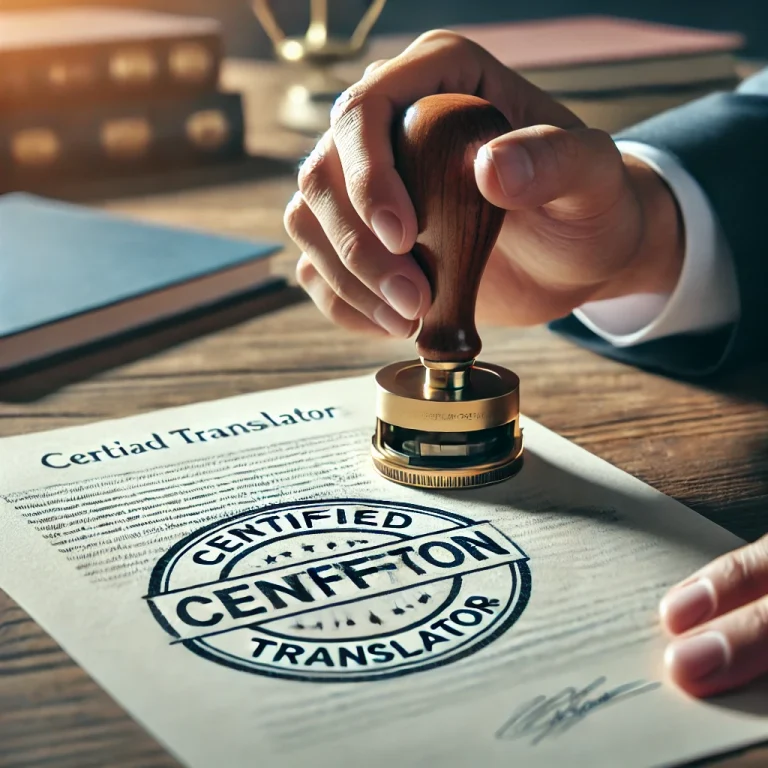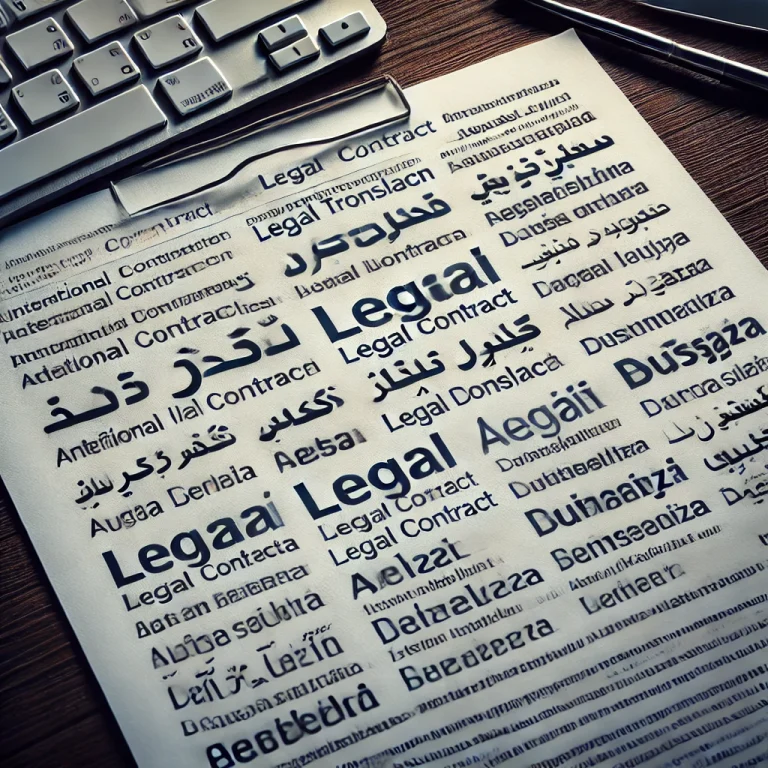In a globalized world, legal translation plays a critical role in facilitating communication and understanding across borders. From contracts and court documents to intellectual property filings and patent applications, accurate legal translation is essential for businesses and individuals operating in foreign jurisdictions. However, it is not merely a matter of replacing words from one language to another; it requires a deep understanding of both legal terminology and cultural nuances.
In this comprehensive guide, we unlock the power of legal translation, exploring the intricacies of this specialized field and providing valuable insights for legal professionals, multilingual businesses, and individuals seeking reliable translation services. We delve into the challenges faced by legal translators, the importance of accuracy and precision, and the strategies to ensure the highest quality translations. From legal translation best practices to the latest industry trends and technologies, this guide equips readers with the knowledge and tools to navigate the complex world of legal translation effectively. Whether you are a lawyer, a language service provider, or a business expanding internationally, understanding the power of legal translation is crucial in achieving success in the global marketplace. legal translation services
Importance of Accurate Legal Translation
Accurate legal translation is paramount in today’s globalized world. With the increasing cross-border business transactions, international legal disputes, and the need for multilingual compliance, the demand for precise legal translation has never been higher. Inaccurate or improperly translated legal documents can have severe consequences, ranging from contractual disputes and financial losses to regulatory non-compliance and even legal liabilities.
Legal language is often highly specialized, nuanced, and context-dependent. A single mistranslation can alter the meaning and impact of a legal document, leading to misunderstandings, misinterpretations, and potentially disastrous outcomes. For instance, a mistranslation in a patent application could jeopardize the protection of intellectual property rights, while an error in a commercial contract could result in a breach of agreement and costly litigation.
Precise legal translation is not just a matter of linguistic proficiency; it requires a deep understanding of legal systems, terminology, and cultural differences. Legal translators must possess specialized knowledge to accurately convey the intended meaning, preserve the legal intent, and ensure the translated document is fully compliant with the target jurisdiction’s legal framework. Failure to do so can have far-reaching consequences, undermining the integrity of legal proceedings, international transactions, and the overall trust in the legal system. Understanding the Value of Certificate Translation, such as a government or international legal body that provides official guidelines on legal translation (e.g., American Translators Association).

Challenges in Legal Translation
Legal translation presents a unique set of challenges that set it apart from other forms of translation. The complexity of legal language, the need for cultural and contextual awareness, and the high stakes involved in legal proceedings make legal translation a highly specialized field.
One of the primary challenges in legal translation is the inherent ambiguity and nuance of legal terminology. Legal terms often have multiple meanings, and their interpretation can vary depending on the jurisdiction, legal tradition, and cultural context. Translating these terms accurately requires a deep understanding of the legal system and the ability to navigate the linguistic and cultural differences between the source and target languages.
Another significant challenge is the need to maintain the legal validity and enforceability of the translated document. Legal translations must adhere to strict formatting, terminology, and stylistic conventions to ensure the translated document is recognized and accepted by the target legal system. Failure to do so can render the document legally invalid or unenforceable, potentially leading to costly disputes and legal consequences.
Additionally, legal translation often involves highly technical and specialized content, such as patent applications, court proceedings, or financial regulations. Translators must possess subject-matter expertise and the ability to accurately convey complex legal concepts, technical jargon, and industry-specific terminology. Failure to do so can result in misunderstandings, errors, and potentially disastrous outcomes.

Key Principles of Legal Translation
Effective legal translation is guided by a set of key principles that ensure the accuracy, precision, and integrity of the translated documents. These principles are essential for legal translators to navigate the complexities of the legal landscape and deliver high-quality translations that meet the stringent requirements of the target legal system.
One of the fundamental principles is the preservation of legal intent. Legal translators must ensure that the translated document accurately reflects the original intent, meaning, and legal effect of the source text. This requires a deep understanding of the legal context, the underlying legal concepts, and the nuances of the language used.
Adherence to legal terminology and conventions is another critical principle. Legal translators must be well-versed in the specialized terminology and formatting requirements of the target legal system, ensuring that the translated document aligns with the established conventions and is recognized as legally valid.
Maintaining cultural and contextual awareness is also essential in legal translation. Translators must be attuned to the cultural differences, legal traditions, and societal norms of the target jurisdiction, and adapt the translation accordingly to ensure the translated document is relevant, appropriate, and legally acceptable.
Additionally, legal translators must uphold the principles of accuracy, clarity, and consistency throughout the translation process. Errors, ambiguities, or inconsistencies in the translated document can have serious legal consequences, undermining the integrity and enforceability of the document. A site providing global standards or certifications in legal translation, such as ISO 17100 (e.g., ISO Standards for Translation Services).
Legal Translation Techniques and Strategies
To navigate the complexities of legal translation, practitioners employ a range of techniques and strategies to ensure the accuracy, precision, and legal validity of the translated documents. These techniques and strategies are essential for delivering high-quality legal translations that meet the stringent requirements of the target legal system.
One of the key techniques in legal translation is the use of specialized legal dictionaries and glossaries. Translators must have access to comprehensive resources that provide accurate definitions, contextual usage, and legal equivalents for specialized terminology, ensuring the consistent and appropriate use of legal terms throughout the translation.
Another important strategy is the thorough research and analysis of the legal context. Translators must delve into the legal framework, principles, and precedents of both the source and target jurisdictions to understand the nuances and implications of the legal language used in the document. This contextual knowledge is crucial for preserving the legal intent and ensuring the translated document is legally valid and enforceable.
Collaborative work with subject-matter experts, such as lawyers, legal scholars, or industry professionals, is also a common strategy in legal translation. By engaging with these experts, translators can gain deeper insights into the legal concepts, terminology, and cultural considerations, enabling them to produce translations that are both linguistically accurate and legally sound.
Additionally, legal translators often employ various techniques to ensure the clarity, consistency, and readability of the translated document. This may include the use of plain language, the standardization of terminology, and the implementation of quality assurance measures to identify and rectify any errors or ambiguities. A reputable third-party tool or blog post discussing legal translation tools like CAT tools, translation memory, or glossaries (e.g., SDL Trados).
Common Legal Documents that Require Translation
In the global business landscape, a wide range of legal documents require accurate translation to facilitate cross-border transactions, legal proceedings, and regulatory compliance. These documents span various domains, each with its own unique linguistic and legal challenges.
Contracts and commercial agreements are among the most common legal documents that require translation. From sales contracts and distribution agreements to joint venture contracts and licensing deals, the accurate translation of these documents is crucial to ensure the enforceability of the terms and conditions, as well as the protection of the parties’ rights and obligations.
Court documents, such as pleadings, affidavits, and court orders, also necessitate precise legal translation. Inaccurate translations in legal proceedings can lead to misunderstandings, incorrect interpretations, and potentially flawed judicial decisions, with far-reaching consequences for the parties involved.
Intellectual property (IP) filings, including patent applications, trademark registrations, and copyright documents, are another category of legal documents that require meticulous translation. Errors or inconsistencies in these translations can jeopardize the protection of valuable IP rights, with significant financial and legal implications for the rights holders.
Additionally, legal documents related to corporate governance, such as articles of incorporation, bylaws, and shareholder agreements, often require translation to facilitate cross-border business operations and ensure compliance with local laws and regulations. Accurate translation of these documents is crucial for maintaining the legal validity and enforceability of the corporate structure and decision-making processes.
Choosing a Legal Translation Service Provider
When it comes to legal translation, the selection of a reliable and experienced service provider is crucial. The quality of the translation can have a direct impact on the legal validity, enforceability, and overall success of cross-border transactions, legal proceedings, and regulatory compliance efforts. Here are some key factors to consider when choosing a legal translation service provider:
Specialized expertise: Look for a provider that specializes in legal translation and has a team of translators with extensive experience in the legal field. They should have a deep understanding of legal terminology, conventions, and the nuances of various legal systems and jurisdictions.
Quality assurance: Ensure that the provider has robust quality assurance processes in place, including multiple rounds of proofreading, editing, and verification by subject-matter experts. This helps to minimize the risk of errors and ensure the highest level of accuracy and precision.
Linguistic and cultural competence: The provider should have a diverse team of translators who not only possess linguistic proficiency but also demonstrate a deep understanding of the cultural and contextual factors relevant to the target legal system. This ensures the translated documents are culturally appropriate and legally valid.
Industry-specific knowledge: Depending on the nature of the legal documents, the provider should have experience and expertise in the relevant industry, such as intellectual property, finance, or corporate law. This specialized knowledge is crucial for producing translations that are technically accurate and legally sound.
Confidentiality and security: Legal translation often involves sensitive and confidential information. Ensure that the provider has robust data security measures and confidentiality protocols in place to protect the integrity and privacy of the documents.
Turnaround time and scalability: Consider the provider’s ability to deliver translations within the required timeframes and to scale their services to accommodate the varying volume and complexity of legal translation projects.
By carefully evaluating these factors, you can identify a legal translation service provider that can deliver high-quality, legally compliant translations, ensuring the success of your cross-border legal endeavors.

Tips for Effective Legal Translation
Achieving effective legal translation requires a comprehensive approach that goes beyond linguistic proficiency. Here are some key tips to ensure the highest quality legal translations:
Ensure Linguistic Accuracy: Legal translators must have a deep understanding of the specialized terminology, syntax, and stylistic conventions of both the source and target languages. They should use authoritative legal dictionaries, glossaries, and reference materials to ensure the accurate and consistent use of legal terminology.
Maintain Legal Equivalence: The translated document must preserve the legal intent, meaning, and effect of the original text. Translators must have a thorough understanding of the legal systems, principles, and precedents in both jurisdictions to ensure the translated document is legally valid and enforceable.
Prioritize Cultural Awareness: Legal translation requires a keen awareness of cultural differences, societal norms, and local practices. Translators must adapt the translation to ensure the document is culturally appropriate and aligns with the target legal system’s expectations.
Collaborate with Subject-Matter Experts: Engaging with legal professionals, such as lawyers, judges, or industry experts, can provide valuable insights into the nuances of the legal content and help ensure the translation is technically accurate and legally sound.
Implement Quality Assurance Measures: Robust quality assurance processes, including multiple rounds of proofreading, editing, and verification, are essential to identify and rectify any errors or inconsistencies in the translated document.
Ensure Consistency: Maintain consistency in the use of terminology, formatting, and stylistic conventions throughout the translation to ensure the document’s coherence and legal validity.
Stay Up-to-Date with Legal Developments: Continuously monitor changes in legal terminology, regulations, and industry practices to ensure the translations remain current and legally compliant.
Leverage Technology Responsibly: While technology, such as machine translation and computer-assisted translation tools, can enhance efficiency, human oversight and quality control are crucial to ensure the accuracy and legal validity of the final translation.
By following these tips, legal translation service providers can deliver high-quality, legally compliant translations that meet the stringent requirements of the target legal system and contribute to the success of cross-border legal endeavors.
The Role of Technology in Legal Translation
The rapid advancements in technology have had a significant impact on the legal translation industry, revolutionizing the way translators approach their work and enhancing the overall quality and efficiency of legal translations.
One of the most prominent technological developments in legal translation is the use of machine translation (MT) and computer-assisted translation (CAT) tools. These technologies have the potential to increase productivity, reduce turnaround times, and ensure greater consistency in the use of specialized terminology. However, it is crucial to recognize the limitations of these tools, particularly in the highly nuanced and context-dependent field of legal translation.
While machine translation can provide a useful starting point, human oversight and quality control remain essential to ensure the accuracy, precision, and legal validity of the final translation. Translators must carefully review the machine-generated output, verify the appropriate use of legal terminology, and make necessary adjustments to preserve the legal intent and enforceability of the document.
In addition to machine translation, legal translation service providers are increasingly leveraging advanced technologies, such as translation memory (TM) and terminology management systems. These tools enable translators to build and maintain extensive databases of previously translated legal content, ensuring consistent use of terminology and formatting across multiple projects.
Furthermore, the integration of artificial intelligence (AI) and machine learning (ML) algorithms into legal translation workflows is an emerging trend. These technologies can assist in the automated analysis of legal documents, the identification of potential issues or inconsistencies, and the suggestion of appropriate legal terminology and phrasing. However, the deployment of these advanced technologies in legal translation requires careful evaluation and close collaboration between translators and technology experts to ensure the preservation of legal integrity and compliance.
Another important technological development in legal translation is the use of cloud-based collaboration and project management platforms. These tools enable seamless communication, file sharing, and real-time collaboration between translators, subject-matter experts, and clients, facilitating the efficient and secure handling of legal translation projects.
As the legal translation industry continues to evolve, the responsible integration of technology will play a crucial role in enhancing the quality, speed, and cost-effectiveness of legal translations. However, it is essential to maintain a balanced approach, where human expertise and oversight complement the capabilities of technology to deliver translations that are not only linguistically accurate but also legally compliant and enforceable.

FAQs
Why Do Legal Documents Require Certified Translation?
Legal documents require certified translation to ensure they are accurately translated and legally valid for use in courts, government agencies, or international transactions.
How Do I Know if a Document Needs Certification?
If a document will be used in legal proceedings, submitted to a government agency, or used internationally, it will likely need certified translation.
What is the Difference Between Certified and Notarized Translation?
Certified translation guarantees accuracy, while notarized translation is signed and stamped by a notary public to confirm the translator’s identity.
How Long Does Certified Legal Translation Take?
The timeline varies depending on the length and complexity of the document, but certified legal translations typically take a few days to a week.
Can I Translate Legal Documents Myself?
Legal documents should always be translated by certified professionals to avoid potential legal issues and ensure they are accepted by authorities.
How Much Do Certified Legal Translation Services Cost?
Costs vary depending on the document’s length and complexity, but certified translations generally cost more than standard translations due to the level of expertise required.
Conclusion: The Impact of Quality Legal Translation
In the dynamic and interconnected global landscape, the importance of quality legal translation cannot be overstated. Accurate and precise legal translation is the cornerstone of successful cross-border transactions, effective international legal proceedings, and seamless regulatory compliance.
By unlocking the power of legal translation, businesses, legal professionals, and individuals can navigate the complex web of legal frameworks and cultural differences with confidence. Precise legal translations ensure the enforceability of contracts, the protection of intellectual property rights, and the effective resolution of legal disputes, ultimately contributing to the growth and success of organizations operating in the global marketplace.
Moreover, quality legal translation plays a crucial role in fostering trust and understanding between parties from diverse legal systems and cultural backgrounds. By bridging the linguistic and legal divide, legal translation facilitates clear communication, promotes mutual respect, and strengthens the foundations of international cooperation and collaboration.
As the world continues to evolve, the demand for reliable and legally compliant translation services will only continue to grow. By embracing the principles of accuracy, precision, and cultural awareness, legal translation service providers can empower their clients to thrive in the global arena, unlocking new opportunities and mitigating legal risks.
In conclusion, the impact of quality legal translation cannot be overstated. It is a critical enabler of global commerce, international cooperation, and the rule of law. By investing in the expertise and technology required to deliver exceptional legal translations, businesses, legal professionals, and individuals can unlock the full potential of the global marketplace and navigate the complexities of the legal landscape with confidence and success.


